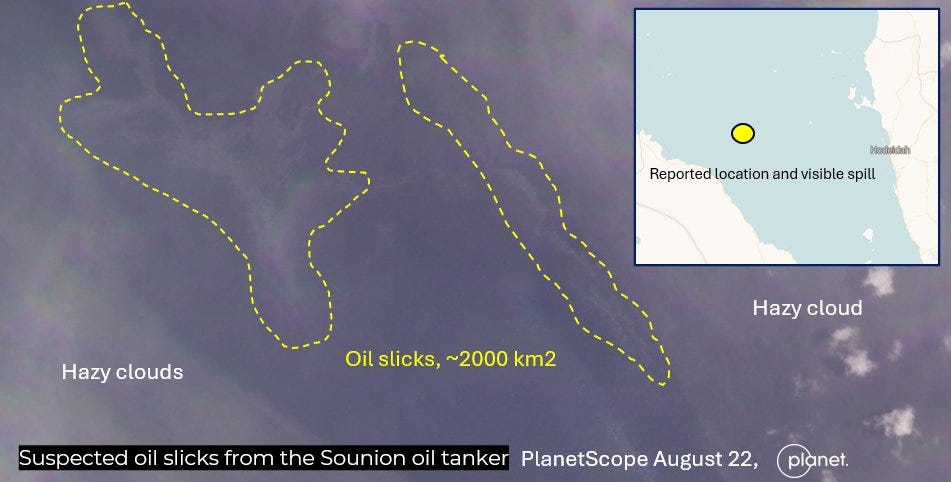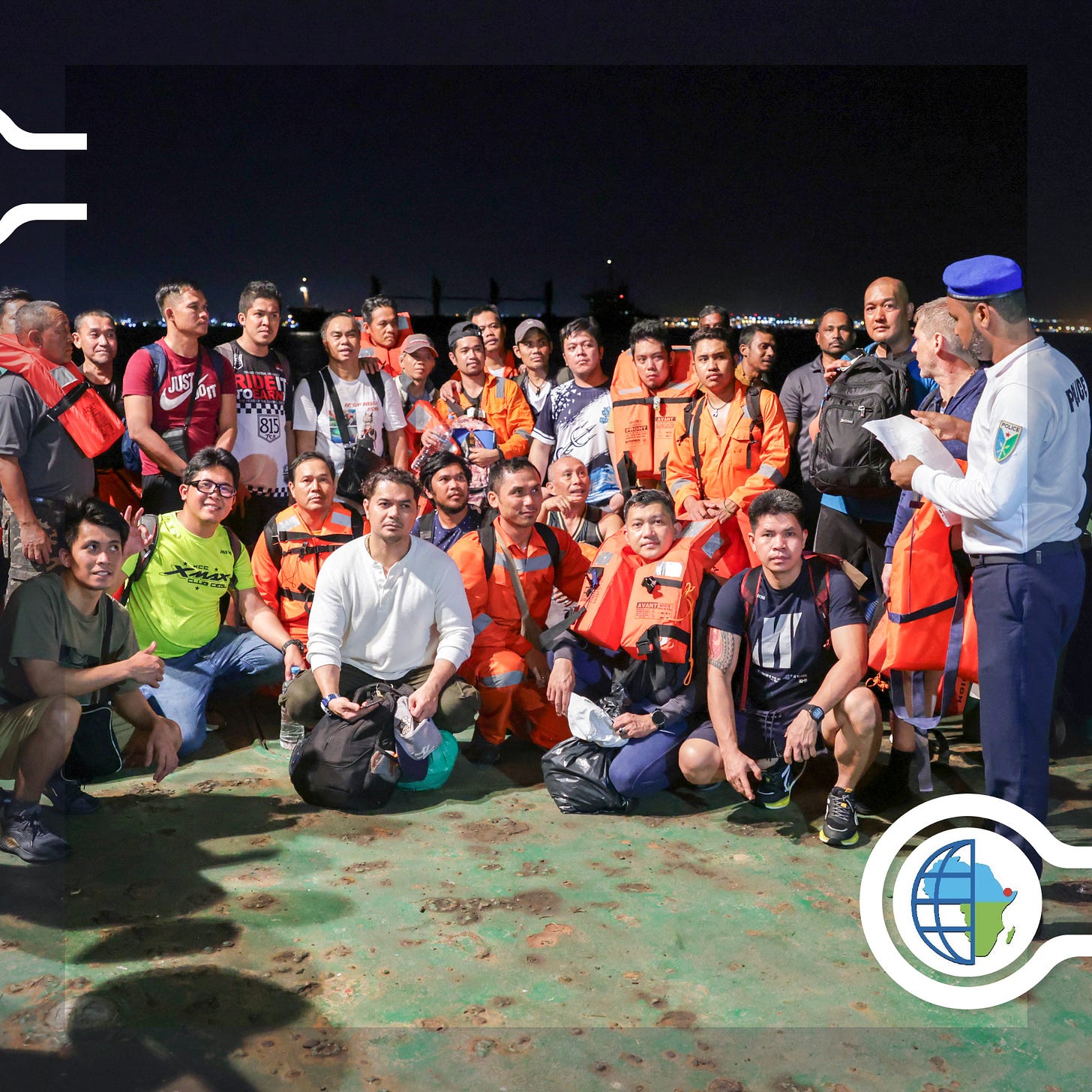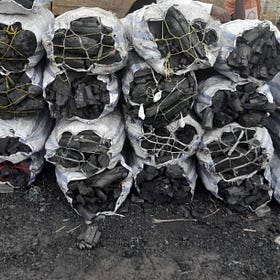Risk of huge oil spill in the Red Sea
Coasts of Eritrea, Sudan, and Yemen threatened by "environmental disaster"
An oil tanker carrying four times as much crude oil as the Exxon Valdez, which infamously spilled oil across 2,100 km (1,300 miles) of Alaskan coastline in 1989, is currently burning 65 km off the coast of Eritrea.
The Liberian-flagged, Greek-owned, Russian-captained, Filipino-crewed, Monaco-managed ship was sailing from Iraq to Cyprus when it came under attack.
The Houthi movement of Yemen has claimed responsibility for the attack on the ship, MV Sounion, claiming it belongs to a company that has delivered cargo to Israel.
The Houthis first disabled the Sounion with projectiles, forcing the crew to evacuate, before rigging it with additional explosives. They detonated the explosives Friday, filming the explosion while shouting their slogan, “God is great, death to America, death to Israel, a curse upon the Jews, victory to Islam!”
The Sounion carried 150,000 metric tonnes of crude oil, equivalent to 1.1 million barrels, according to the European Union naval mission “Aspides,” which rescued the crew of Sounion after they had abandoned ship. The Greek-owned vessel had not asked for military protection, the EU mission reported.
An oil spill from the Sounion “could lead to a severe ecological disaster with potentially devastating effects on the region’s biodiversity,” the EU naval mission warned. Similarly, the U.S. State Department warned that the spill would “destroy the fishing industry and regional ecosystems” in the Red Sea.
Sounion was first approached by two small boats in the early morning of August 21, approximately 77 nautical miles (142 km) west of the Yemeni port of Al Hudaydah. The crew resisted being boarded and attempted to escape by opening fire on the approaching craft with small arms and sailing away. The Houthis retaliated by striking the ship with guided rockets or drones, hitting the engine room, causing a leak, disabling the electricity, and disabling the ship’s engine.
The following day, on the morning of August 22, the French naval frigate Chevalier Paul, which is part of the EU naval mission, arrived in the area to evacuate the crew and encountered an unmanned speedboat heavily laden with explosives.
The warship destroyed this naval drone before evacuating the 29 crew members, according to a statement by the French naval command based in Abu Dhabi. There were no visible fires on board the ship at the time of the rescue, according to Aspides.
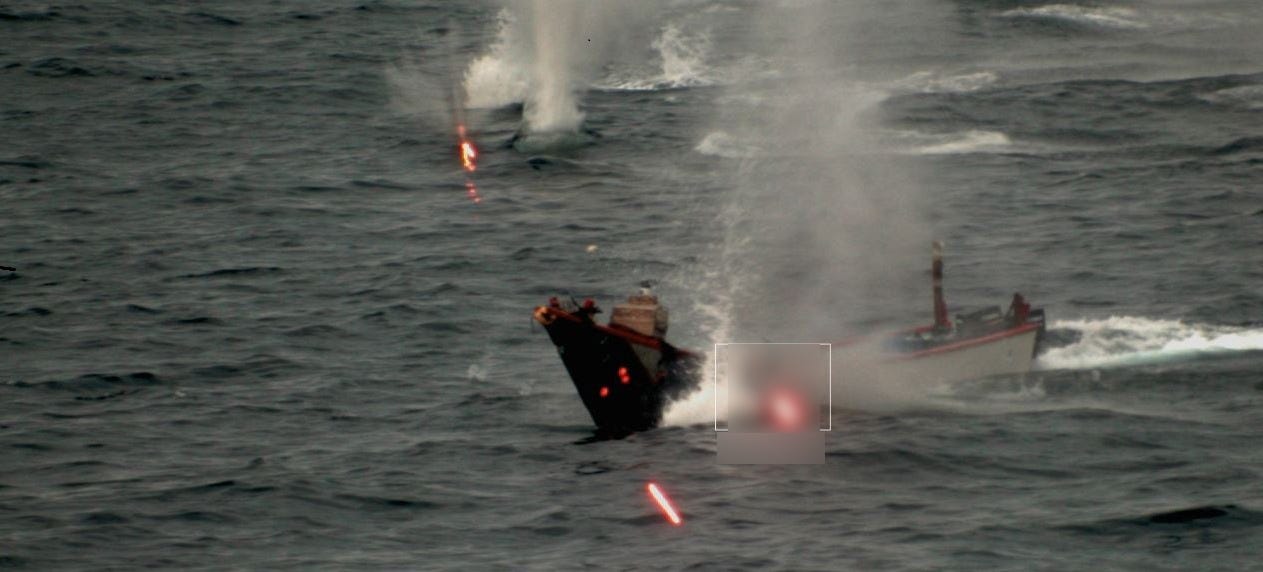
Nevertheless, the Houthis somehow managed to plant explosives on the ship after the crew had evacuated, which they detonated on August 23. A frame-by-frame analysis of the video above, conducted by The Associated Press, “suggested three simultaneous explosions struck the deck of the Sounion. That signature suggests an attack conducted by planted explosives, rather than a strike by missile or drone.”
The United Kingdom Maritime Trade Operations (UKMTO) detailed the attack in a series of alerts to mariners:
“UPDATE 001: The Master [ship’s captain] of a merchant vessel reported at 0257UTC that the vessel was approached by two small craft. The first craft had 3-5 persons onboard, while the second had approximately 10.
“The two small craft hailed the merchant vessel, leading to a brief exchange of small arms fire. The distance between the small craft and the merchant vessel subsequently increased to 2 nautical miles.
“At 0500 UTC the Master reported that the merchant vessel had been struck by two unidentified projectiles.
“UPDATE 002: At 0549 UTC the Master reported a further attack by an unknown projectile. There is a fire onboard and the vessel has lost engine power.
“The vessel is drifting and not under command. The Master also reports a small craft acting suspiciously in the vicinity.
[22 August] UPDATE 003: UKMTO have received report: the vessel is now at anchor and all crew have been evacuated.
[23 August] UPDATE 004: UKMTO have received a report that three fires have been observed on vessel. The vessel appears to be drifting.”
The crew were evacuated to Djibouti. According to the Djibouti Ports Authority, the crew included a Russian captain, 24 Filipino sailors, 3 Indian sailors, and 1 Nepalese.
Location of the spill
As of Sunday, August 25, commercial satellite photos showed the Sounion still burning off the coast of Eritrea (location: 14.99191, 41.65488). Reports differed as to whether it was still drifting or anchored.
The ship is about 470 miles southeast of Sudan’s southernmost coast, 130 km from Yemen, and 65 km from Eritrea. For comparison, the Exxon Valdez spill affected 2,100 km of coastline, of which 320 km were heavily or moderately covered in oil.
The Sounion’s cargo of 1.1 million barrels is about four and a half times the volume of the Exxon Valdez cargo of 240,000, and about a third the size of another famous oil spill, the Deepwater Horizon.
Using satellite images, Wim Zwijnenburg, an open source researcher affiliated with Dutch organization Pax, identified oil slicks Saturday that already covered an area of about 2,000 square kilometres.
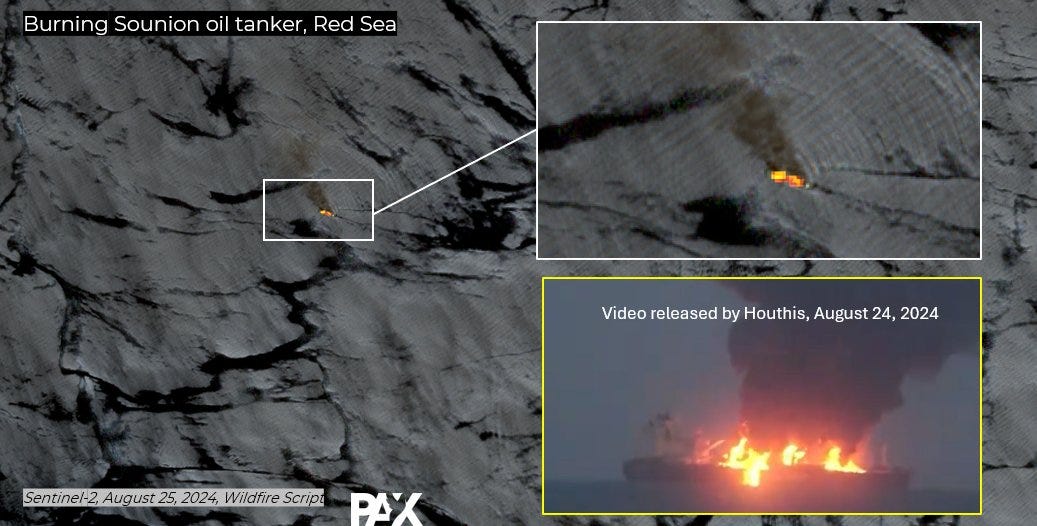
Impact on Sudan famine
Houthi attacks on shipping in the Red Sea have tripled shipping rates, making it more difficult to bring humanitarian supplies into Sudan and dealing another blow to Sudan’s already devastated export economy.
Production of agricultural exports such as gum arabic and livestock, as well as crude oil, have dropped sharply due to fighting in agricultural areas of Sudan, disruption of key trade routes within Sudan, and the collapse of key institutions that used to provide pesticides, fertilizers, financing, and machinery to Sudanese farmers.
Mass displacement and mass unemployment in Sudan, coupled with a sharp drop in exports and local agricultural production, threaten to plunge the country into a cycle of hunger that could last for several years.
Currently, parts of North Darfur State are considered a famine zone, according to international famine monitoring groups, while malnutrition is prevalent in others areas too, falling short of famine conditions but still causing significant suffering.
Related coverage:
War accelerates deforestation in Darfur
Shortages of cooking gas have forced citizens in Darfur to rely entirely on charcoal and firewood to cook food, resulting in increased logging and deforestation.


